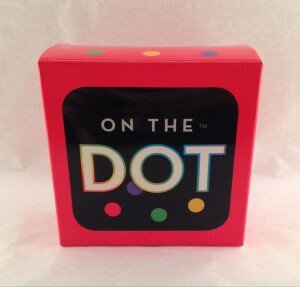
One thing that has always been a challenge for me in my teaching is the dreaded question, “What do I do now?” We all know that kids work at different speeds, finish things at wildly different rates, and don’t like to be bored. So of course, if they don’t have something constructive to do when they finish a task, they find something to do – constructive or not.
For the first part of my career my go to answer was “Read a book.” Now, I still think that reading, and repeated reading, is incredibly valuable. However, treating books as a “time filler” or “busywork” sort of thing did not communicate the message I wanted to send about reading. I want my students to view reading time as precious, special time to be valued.
Later I tried a few different “early finishers” sorts of activities, and then, by sharing ideas with colleagues, brainstorming, and searching on the internet, I think I have found some winners. So, without further ado…
- Unifix Sodoku – This is probably my students’ favourite. I purchased it from Undercover Classroom. I copied and laminated a set of all of the cards, as well as the answer keys. Then I put together five envelopes with the cubes needed to complete a card. This means up to five kids can work on this task at a time. It is simple, fun, and valuable! My biggest challenge with this one is keeping the kids from working together on it (resulting in noise while other students are completing their work.) But what a great problem to have!
- Dots – This is a great game I picked up at a games shop when looking for activities for my daughter. You get four transparent cards that you need to layer together to create a certain pattern. There are tons of patterns to recreate. You can flip, turn, and layer the cards any way you like, and sometimes you need to hide certain coloured dots within the layers to create the desired pattern. This is a great activity for logic, spatial awareness, and considering pictures from various angles. The Dots game comes with four different sets of transparent cards (in four colours), so you can have up to four kids doing this at a time. This is also a class favourite, and I love it as well!
- Boggle – This has been used in many classrooms around the world as an excellent early finisher activity. This version comes from Teacher on the Loose. I simply rearrange the letters once a week. I have a folder with lots of Boggle sheets copied in it. Students grab a sheet and see how many words they can build! I often give them a challenge by letting them know that there is at least one word that is seven (or eight) letters long in the puzzle. They love trying to find it! I have them turn their sheets in at the end of the week to see who has achieved the highest score. (In truth, some weeks I remember to collect and score, and others I don’t. Of course it helps them to stay engaged if I do, but it’s not the end of the world if I don’t!)
- Noggle – This is the brilliant cousin to Boggle. I set it up exactly the same way, but it involves numbers. At the moment I have challenged my students to find as many ways as possible to get to 100 (or as close as they can.) They can add, subtract, multiply, or divide. But this game has MANY possible versions. For example, give the kids any target number you like; tell them they must reach the number in only three steps; challenge the kids to reach a target number using three or more different operations; have them reach a target number using ONLY one operation (multiply, divide, etc). With so many possibilities, this one is a winner. And my kids are beyond proud when they figure out an equation, or series of equations, that works. The version I purchased is no longer available, but there are tons of them up for grabs on Teachers Pay Teachers!
- Scattergories – This is another game that is super easy to maintain. I simply have a pile of Scattergories sheets available for students. They pick a letter and then fill in the blanks with words beginning with that letter. I am using Josiane L.’s free game, but there are tons of options out there!
- Name ‘Em A to Z – This is very similar to Scattergories. For this activity there is an alphabet sheet with a blank line after each letter. You assign a topic for the week. For example, “Fruits,” “Major Cities,” “Board Games,” etc. The students have to think of something in that category for every letter in the alphabet. For example, for the category “Fruits” they might write apple, banana, cherry, etc. If you like you can make it a competition. At the end of the week compare student answers. Any duplicate answers are crossed out. The students with the most unique answers wins! Thanks to Pink at Heart for the Free recording sheet!
My students all have unfinished work folders as well, which they keep in their desks. So the idea is that they finish all assigned work, and then quickly and quietly choose an “Early Finisher” activity. These have made my life SO much easier!
What do your early finishers do?

Comments are closed.